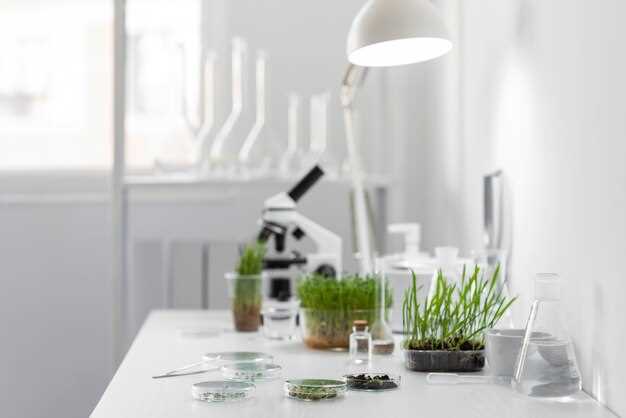
In today’s rapidly evolving world, the need for sustainable practices and innovative solutions to combat environmental challenges has become more pressing than ever before. As we strive to protect and preserve our planet for future generations, the field of green chemistry emerges as a beacon of hope, offering a fresh perspective on how we can achieve a cleaner and healthier environment.
Green chemistry, often referred to as environmentally friendly chemistry, is a discipline that focuses on the design and development of chemical processes and products that minimize the use and generation of hazardous substances. It seeks to revolutionize traditional chemical practices by promoting the use of renewable resources, reducing waste, and minimizing the environmental impact of chemical processes.
At its core, green chemistry embodies the principles of sustainability and responsible stewardship of our natural resources. It encourages scientists and researchers to think beyond the conventional boundaries of chemistry and explore innovative ways to address the complex environmental challenges we face today. By embracing the principles of green chemistry, we can pave the way for a more sustainable future, where the well-being of our planet and its inhabitants takes precedence over short-term gains.
Through the application of green chemistry principles, scientists are developing groundbreaking technologies and methodologies that have the potential to transform industries and revolutionize the way we produce and consume goods. From renewable energy sources to biodegradable materials, green chemistry offers a vast array of sustainable solutions that can help us build a cleaner, greener, and more prosperous world.
Principles of Green Chemistry
In this section, we will explore the fundamental principles that underpin the environmentally-friendly practices of the field of sustainable chemistry. These principles guide scientists and researchers in developing innovative solutions that minimize harm to the natural world and promote a healthier and cleaner planet.
At the core of green chemistry lies the concept of sustainability, which entails the responsible use of resources to meet the needs of the present generation without compromising the ability of future generations to meet their own needs. Green chemistry aims to achieve this by employing processes and techniques that minimize or eliminate the use of hazardous substances, reduce waste generation, and conserve energy and water.
One key principle of green chemistry is the prevention of pollution at its source. Rather than treating or disposing of pollutants after they have been generated, green chemists focus on designing processes that avoid the formation of hazardous substances altogether. This proactive approach not only reduces the environmental impact but also improves the efficiency and cost-effectiveness of chemical processes.
Another principle is the use of renewable feedstocks. Green chemists strive to replace non-renewable resources, such as fossil fuels, with sustainable alternatives derived from biomass, agricultural waste, or other renewable sources. By utilizing these renewable feedstocks, the reliance on finite resources is reduced, and the carbon footprint of chemical processes is minimized.
Furthermore, green chemistry emphasizes the importance of energy efficiency. By optimizing reaction conditions, minimizing energy-intensive steps, and utilizing catalysts, green chemists aim to reduce the energy requirements of chemical processes. This not only reduces greenhouse gas emissions but also contributes to the overall sustainability of the chemical industry.
Lastly, green chemistry promotes the design of safer chemicals. By considering the potential hazards and risks associated with chemical substances, green chemists develop compounds that are less toxic, biodegradable, and environmentally benign. This approach ensures that the products and materials produced through green chemistry practices have minimal adverse effects on human health and the environment.
In summary, the principles of green chemistry encompass sustainability, pollution prevention, the use of renewable feedstocks, energy efficiency, and the design of safer chemicals. By adhering to these principles, green chemists strive to create a more sustainable and environmentally-friendly future.
Benefits of Sustainable Chemistry
Exploring the advantages of sustainable chemistry offers valuable insights into the positive impact it can have on our world. By adopting sustainable practices and innovative approaches, we can achieve a cleaner and healthier environment for future generations.
1. Environmental Preservation
Sustainable chemistry promotes the preservation of our natural resources and ecosystems. By minimizing the use of hazardous substances and reducing waste generation, it helps to mitigate pollution and protect biodiversity. This approach ensures that our environment remains resilient and capable of sustaining life.
2. Health and Safety
Embracing sustainable chemistry leads to the development of safer products and processes. By prioritizing the use of non-toxic materials and minimizing exposure to harmful substances, it helps to safeguard human health and enhance workplace safety. This proactive approach ensures the well-being of both individuals and communities.
3. Energy Efficiency

Sustainable chemistry promotes the efficient use of energy throughout the entire life cycle of a product. By optimizing manufacturing processes, reducing energy consumption, and utilizing renewable energy sources, it contributes to the overall reduction of greenhouse gas emissions. This approach helps to combat climate change and create a more sustainable energy future.
4. Economic Advantages
Implementing sustainable chemistry practices can lead to economic benefits. By improving resource efficiency, reducing waste, and fostering innovation, it creates opportunities for cost savings and increased competitiveness. Additionally, the development of sustainable technologies and products can open up new markets and drive economic growth.
- Promotes environmental preservation
- Enhances health and safety
- Improves energy efficiency
- Provides economic advantages
In conclusion, sustainable chemistry offers a multitude of benefits that extend beyond the traditional concepts of green chemistry. By embracing these principles, we can pave the way for a more sustainable and prosperous future.
Applications of Sustainable Chemistry
In this section, we will explore the various practical applications of sustainable chemistry, which aims to develop environmentally friendly solutions for a healthier planet. By employing innovative approaches and utilizing alternative materials, sustainable chemistry offers a range of benefits for industries and society as a whole.
1. Eco-friendly Manufacturing Processes

Sustainable chemistry plays a crucial role in revolutionizing manufacturing processes across industries. By replacing hazardous substances with safer alternatives, it minimizes the environmental impact of production while ensuring the safety and well-being of workers. Additionally, sustainable chemistry enables the development of efficient and cost-effective manufacturing methods that reduce waste and energy consumption.
2. Renewable Energy Technologies
Another significant application of sustainable chemistry lies in the development of renewable energy technologies. By utilizing sustainable materials and processes, researchers are able to create more efficient and environmentally friendly energy sources. This includes the production of solar cells, wind turbines, and biofuels, which contribute to reducing greenhouse gas emissions and dependence on fossil fuels.
Overall, sustainable chemistry offers a wide range of applications that promote a cleaner and healthier environment. By embracing these innovative solutions, industries and individuals can contribute to a more sustainable future for generations to come.
Challenges and Future Directions
In the realm of sustainable and eco-friendly practices, there are numerous obstacles and potential pathways for progress. This section explores the hurdles and future directions that lie ahead, aiming to shed light on the evolving landscape of environmentally conscious solutions.
Overcoming Obstacles
One of the key challenges faced in this field is the need to strike a delicate balance between economic viability and environmental preservation. The pursuit of green alternatives often requires significant investments in research and development, as well as the implementation of new technologies. Finding ways to make these solutions financially feasible without compromising their sustainability is a pressing concern.
Additionally, the adoption of green chemistry practices necessitates a shift in mindset and practices across various industries. Encouraging widespread acceptance and implementation of sustainable approaches requires education, awareness, and collaboration among stakeholders. Overcoming resistance to change and fostering a culture of environmental responsibility are crucial steps towards a cleaner future.
Future Directions
Looking ahead, the future of green chemistry holds immense potential for innovation and progress. Advancements in technology, such as the development of more efficient catalysts and renewable energy sources, offer promising avenues for sustainable solutions. Furthermore, the integration of green chemistry principles into policy frameworks and regulations can provide a strong foundation for driving change on a larger scale.
Collaboration between academia, industry, and government entities is paramount in shaping the future of green chemistry. By fostering interdisciplinary partnerships and knowledge sharing, we can accelerate the development and implementation of sustainable practices. Emphasizing the importance of research and development in this field will pave the way for novel solutions that address pressing environmental challenges.
In conclusion, the challenges and future directions in the realm of sustainable practices and green chemistry are multifaceted. Overcoming economic barriers, fostering widespread acceptance, and leveraging technological advancements are key aspects that will shape the path towards a cleaner and more sustainable environment.

Leave a Reply